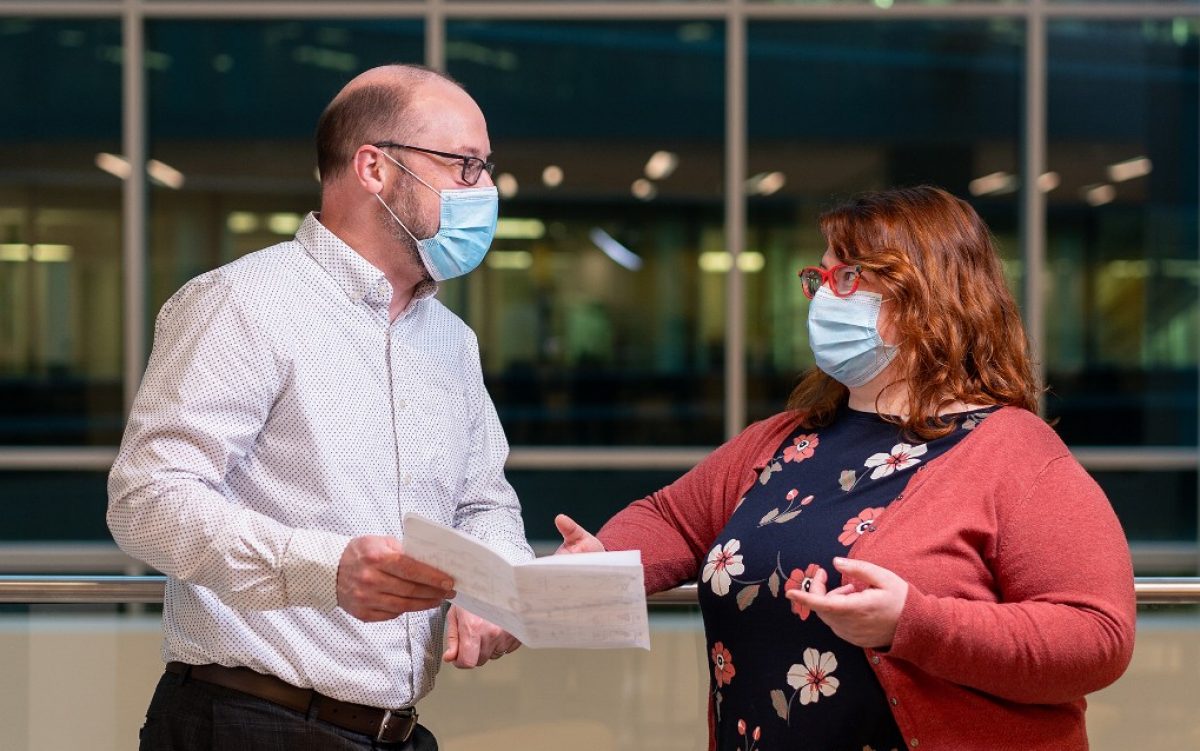
Benjamin Youngblood, Ph.D., and Ardiana Moustaki, Ph.D., of the St. Jude Department of Immunology.
Most clinical studies of the immune system use adults. For pediatric cancer patients, that information doesn't tell the full story. Researchers at St. Jude Children's Research Hospital found that the active immune system in young hosts can drive T cells to exhaustion, thereby working against cancer immunotherapies. The findings were published today in Science Immunology.
"When we think about immunotherapy for children with cancer, we're relying on an understanding that is primarily based on how the immune system works in adults," said corresponding author Benjamin Youngblood, Ph.D., St. Jude Department of Immunology. "What we have shown is that the kinetics for driving the T cell to a dysfunctional state are much faster in a young individual, and the way it's set up is through this interaction in the context of a tumor microenvironment."
Zealous immune cells get tired faster
The goal of higher-order organisms is simply to survive long enough to pass on their genes. Thus, in an evolutionary sense it would be most advantageous for the immune system to zealously protect its host early in life. But that robustness comes at a cost.
Normally, the immune system will dial down that strong immune response over time, resulting in less immune activity later in life. However, robust responses may influence how the immune system responds to the chronic demands of cancer because T cells that are hyperactive will eventually become exhausted.
In this study, the researchers transferred tumor-specific CD8 T cells to young and adult mice and tracked their expansion and function in response to tumors. Results showed that the CD8 T cells primed in the young hosts acquired different characteristics, including heightened expression of inhibitory receptors and their regulating transcription factors. Thus, tumor-infiltrating T cells from young tumors rapidly developed a dysfunctional immune response as compared to adult tumors.
"If we consider how CD8 T cells develop from naïve to exhausted, a young microenvironment pushes the cells further toward exhaustion, while an adult microenvironment generates a diverse spectrum of phenotypes along this path," said first author Ardiana Moustaki, Ph.D., St. Jude Department of Immunology. "This work highlights the importance of designing immunotherapies that are tailored to the developing immune system of children, because the young immune system is not just a smaller copy of the adult immune system. They do share the same components, but the flow of information between these components is diverse, establishing a distinct equilibrium in each host."
Implications for immunotherapies
Myeloid cells survey the body and eliminate stressed and transformed cells. These myeloid cells were found to better capture and present tumor antigens in the young hosts. This ability led to enhanced priming of the T cells and their eventual exhaustion once they infiltrate the tumors. The scientists analyzed immune cells from pediatric solid tumors, showing a relationship between exhausted CD8+ T cells and the frequency of PD-L1-expressing cells, which block immunotherapies.
It is known from clinical trials and other research that in certain cases, particularly in solid tumors, immunotherapy is challenging in pediatric patients. While there are many potential reasons, these findings suggest that the robust nature of the immune system in children may play a role. T cells driven to dysfunction by prolonged activity will become non-responsive quickly, limiting the window during which immunotherapy could be effective.
The study's other authors are Jeremy Chase Crawford, Shanta Alli, Yiping Fan, Shannon Boi, Anthony Zamora, Natalie McDonald, Gang Wu, Joy Nakitandwe, Scott Newman, Scott Foy, Antonina Silkov, Paul Thomas, Alberto Pappo, Michael Dyer, Elizabeth Stewart and Sara Federico all of St. Jude.
The study was funded by grants from the National Institutes of Health (1R01AI114442, 1R01CA237311, UM1AI109565, 1R01AI107625 and 1R01AI136514) and the National Cancer Institute (P30CA021765), Key for a Cure Foundation, St. Jude Garwood Fellowship, St. Baldrick's Foundation, National Comprehensive Cancer Network, and ALSAC, the fundraising and awareness organization of St. Jude.
If you are interested in licensing St. Jude technology related to T cell exhaustion for further development and/or commercial use, find out more:
Read the full text of the Science Immunology article:
Antigen cross-presentation in young tumor-bearing hosts promotes CD8 T cell terminal differentiation
Science Immunology, February 4, 2022






